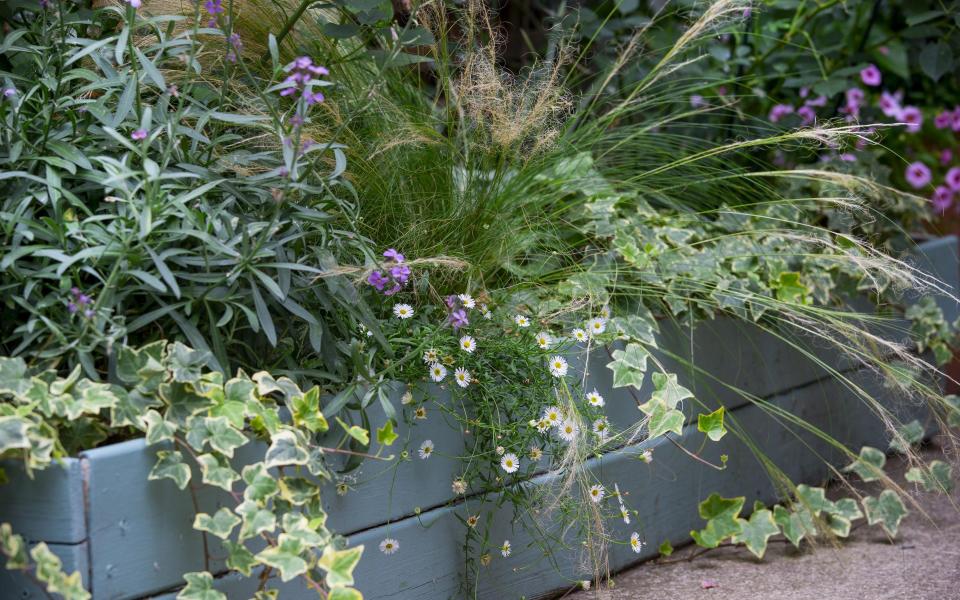The new cottage garden and how to make one, even in a small space

I still remember my first encounter with a cottage garden. After a four-hour car journey from Reading to Mousehole, Cornwall, my three brothers and I, all under ten and desperate to escape the cramped back seat, tumbled onto the gravel leading up to Saltponds Cottage. It was early morning, but the garden teemed; there were bees nestling into wild lavender, shrub roses and grasses. The scent of salt, petals and petrichor from the storm the night before was in the air. The garden was wild, unapologetically so, but there was some order, too.
Now it seems sensible to consign this magical space to memory. I don’t have a cottage by the sea, or a garden for that matter, but for Greg Loades, author and plantsman, this isn't a possibility. "Why should you give up on that dream?" He asks. "Creating a cottage garden in a small space may seem implausible but it is possible. Nostalgia is what brings many people to gardening; it’s always the childhood memory of ‘grandma’s roses’ or a visit to a national garden that brings on the urge to start. Gardeners of today are keen to pick up elements of modern design but don’t want to eradicate the plants they grew up with."
Loades has a brilliant solution to this problem, which he has modelled in his own tiny back garden in Hull.'Who can resist choosing new plants for the garden when they see them in flower in a nursery, even if they don’t know where they will go or whether they are in keeping with what is there?' He writes in his new book, The Modern Cottage Garden (£18.99, Timber Press).
'As we introduce unlikely plant partners to the border, we push the boundaries of traditional garden styles, whether by accident or design. This is, in fact, a good thing. The mixing together of plants from older garden styles is creating something special indeed: a new style that combines the best of the traditional cottage garden and of the new perennial movement.'
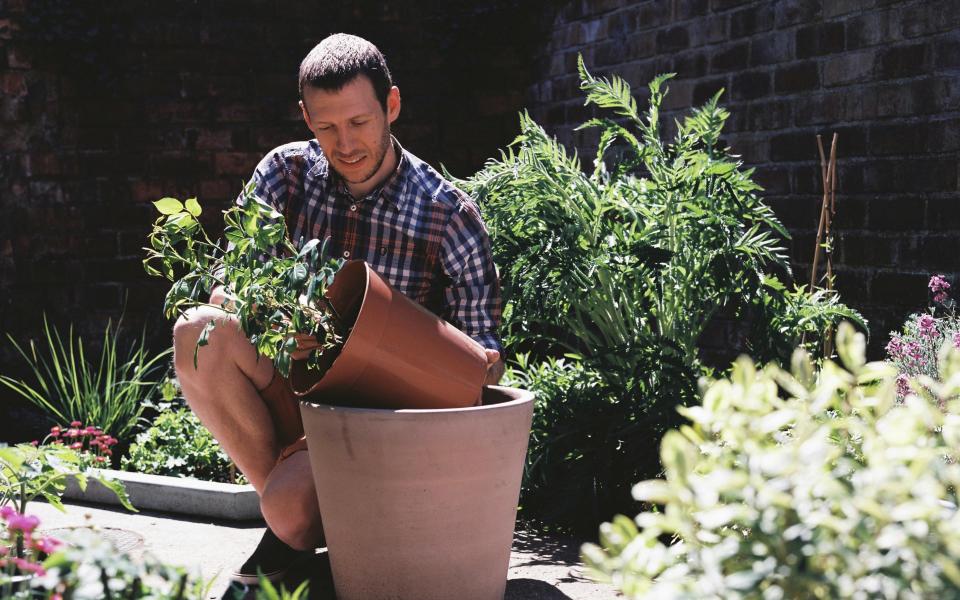
An ideal style for smaller spaces, which many of us have today, the freelance writer and editor seamlessly combines summer cottage garden favourites — scented, climbing roses, bee-filled foxgloves, and hollyhocks — that speak of romance and nostalgia, with the new perennial style (think: prairie grasses and tough perennials that remain colourful until the end of autumn, while offering structure and eye-catching interest in winter.)
"My garden is quite small," he says. "I haven’t got an 150-year-old oak tree or a huge space to play with, but that didn’t stop me planning my very own cottage garden. The key is being selective. Like small garden owners, people with balconies might like to grow sweet peas or perennial wallflowers as they’ll bloom from spring to winter, as opposed to trendy oriental poppies that look good on social media, but only last two weeks."
He recommends taking inspiration from the gardens of Newby Hall in North Yorkshire. While talking to former head gardener Mark Jackson, Loades found that opinion toward herbaceous plants has shifted: whereas once they were associated with having a lull between high and late summer, now: "…many of the perennials in the border, such as aster and echinacea, have impact from the start of summer until well into autumn," says Jackson.
"Eliminating the lull brings the herbaceous border back into the limelight again." Consider planting self-seeding tall grasses at the back of the border to create an intriguing display of colour. Loades also recommends climbers like ivy and Virginia creeper to soften edges of background brick walls.
When looking back over lockdown, Loades reflects on how his garden — which doesn't offer a great deal of space — made a difference. "I have two young children, so having a place to go and grab some air was refreshing. It was so heartening to see that the seed stands were sold out in supermarkets," he says.
"For me, it is such a comfort to know that no matter what decision is made in government, you can't put the breaks on nature; leaves will always fall, flowers will always bloom. I hope that this period of time has made people open their eyes to the beauty around them." Loades believes that every space, big or small, has the potential to become a garden rich in nostalgia. Perhaps I'll look at my patio in London in a different way, after all.
Extracts from The Modern Cottage Garden by Greg Loades (£18.99, Timber Press). Copyright Greg Loades.
Design for spontaneity

"My garden is narrow, so I’ve used plants to create flowing shapes in the garden, rather than stiff, straight lines, he says. "Plant out the largest, structural plants first. Evergreen shrubs or perennials and small trees will give you a solid framework to fill in with your diverse and exciting, colourful, impulse buys and nostalgic flowers. It’s like baking a cake and then going crazy with the icing and decorations."
Be curious about plants
"If you like a particular style of plant, seek out shorter varieties of it," he advises. "Roses, despite the bad reputation they get for looking ‘like a crematorium’ are surprisingly tolerant of growing with other plants and can last right through from spring to autumn. Don't be afraid of buying on impulse; flowers, leaves, and scents project the joy of a season, a living moment that speaks of hope in spring, abundance in summer, wistful reflection in autumn, and the sheer relief of finding something colourful to grab and plant in the garden in winter."
Garden in small spaces
"Having a small space hasn’t hindered me," he says. "Making the most of the diversity of plants on offer helps overcome the frustration of lack of growing spaces. Think of a small garden as a restaurant that serves up only small amounts of food but offers the finest combinations of flavours rather than 'piling it high and selling it cheap'." Loades made use of clever border styles, containers and a lick of good quality paint.
Make use of containers
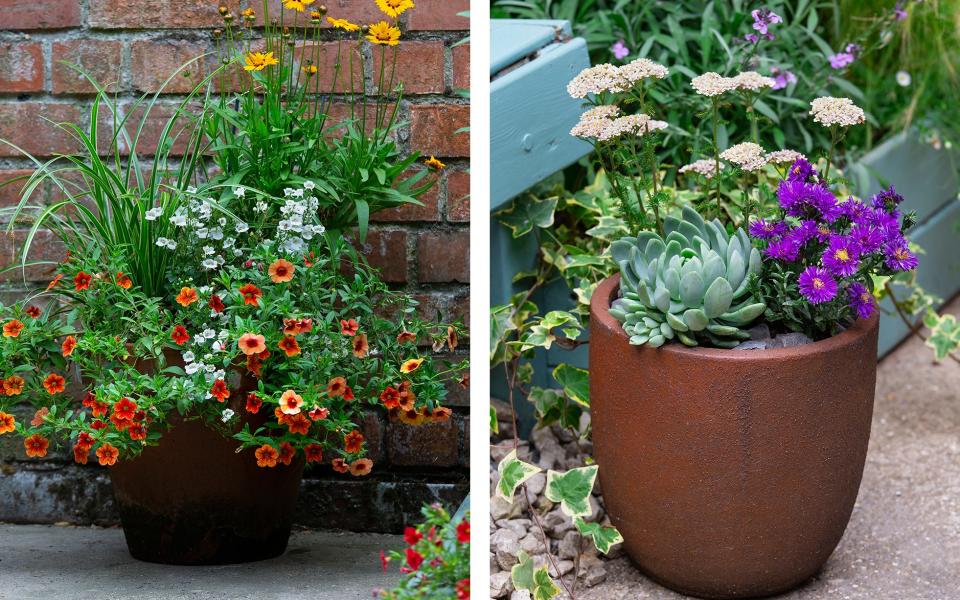
"Think of pots like you would furniture within the home," says Loades. "A simple container planted with three plants that produce eye-catching foliage, flowers, stems, and berries can look interesting and colourful all through the growing season. Patio containers often feature one plant in isolation but this is a missed opportunity in many cases, especially in small gardens."
The containers above are for early and late summer. To the right, a vibrant mix of Achillea millefolium, Aster ‘Victoria’ and Echeveria elegans successfully brings elements of contemporary gardening together for a flush of colour. To the left, Calibrachoa Can-can Terracotta, Carex oshimensis 'Everest', Coreopsis grandiflora SunKiss, and Diascia ‘Divara White’ bring the abundance of summer to life.
Set the tone with bold boundaries
"Garden boundaries often dictate the style of garden that is made within them. If you have a garden with smooth, rendered walls, then an old-fashioned cottage garden will not look as good as it would if backed by an old, slightly weathered brick wall," he says.
"Work with what you have. Old brick walls are made for having old fashioned climbers such as honeysuckle, sweet peas, and Clematis montana scrambling over them, while rusty metal boundaries are the perfect backdrop for showing off the form of tall grasses such as Panicum virgatum and tall perennials such as Verbena bonariensis."
The top ten modern cottage garden plants, according to expert Greg Loades
Achemilla epipisila

Calendula 'Princess Orange Black'
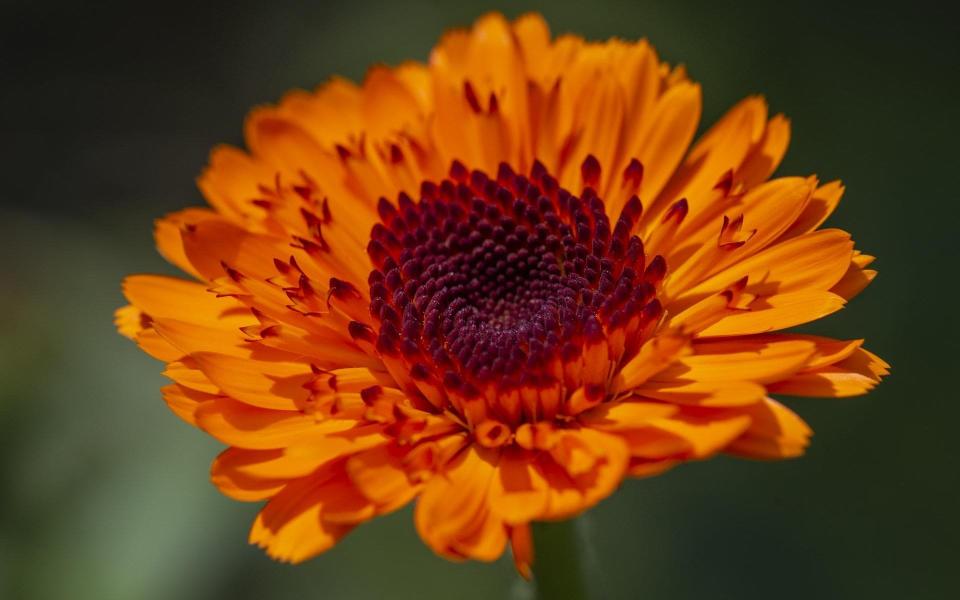
Carex oshimensis 'Everest'
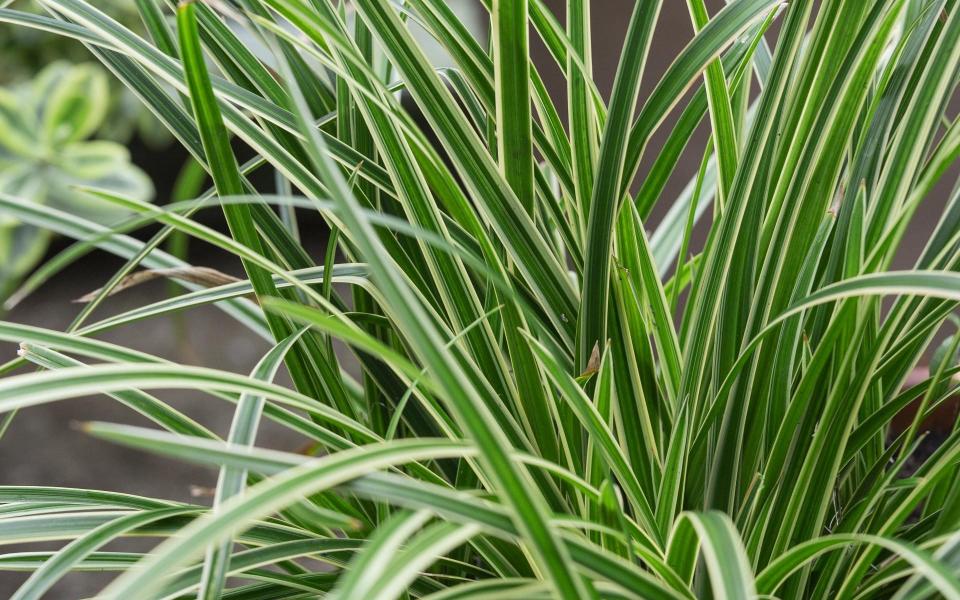
Coreopsis grandiflora 'Sunkiss'
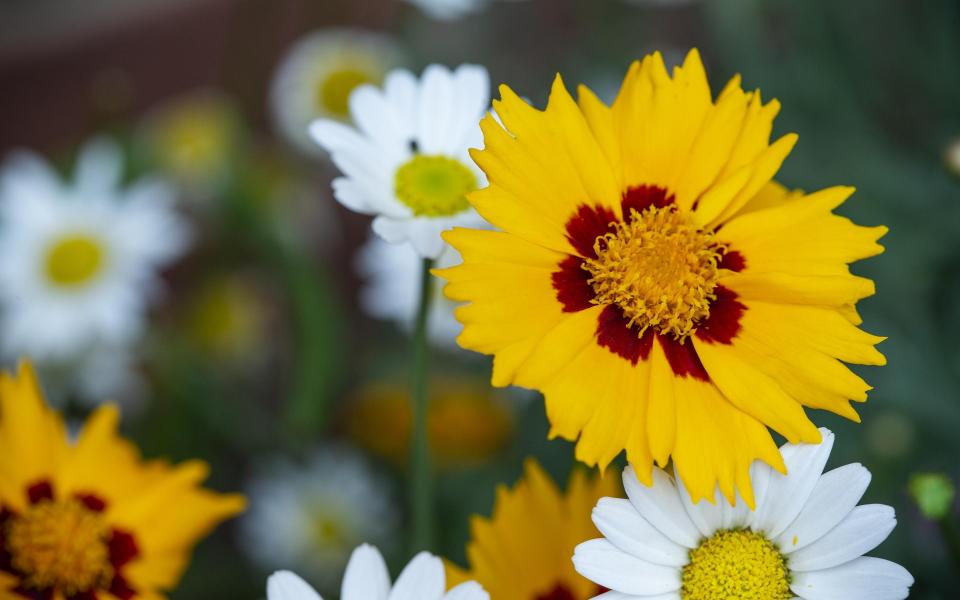
Erysimum 'Bowles's Mauve'
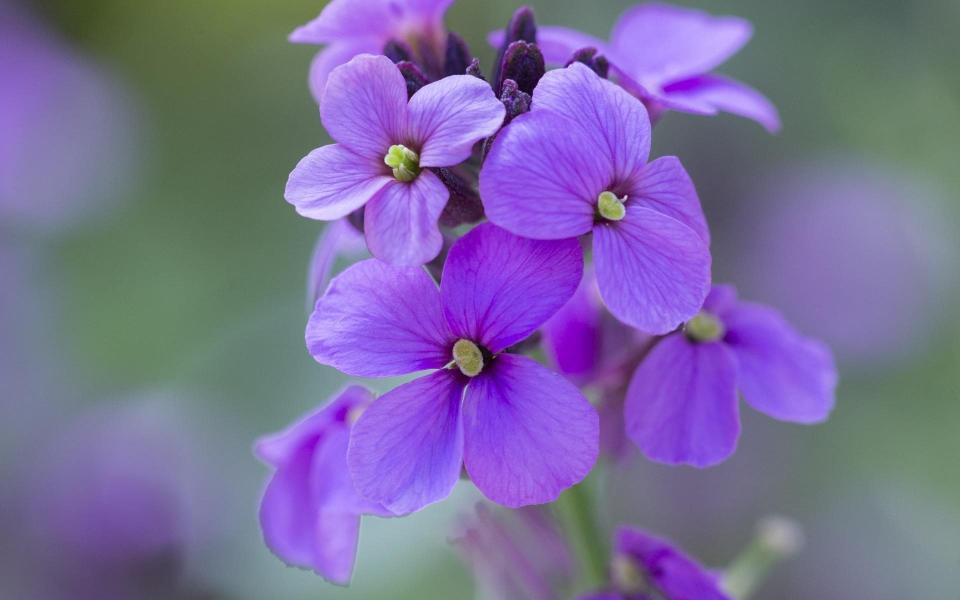
Euphorbia amygdaloides 'Purpurea'
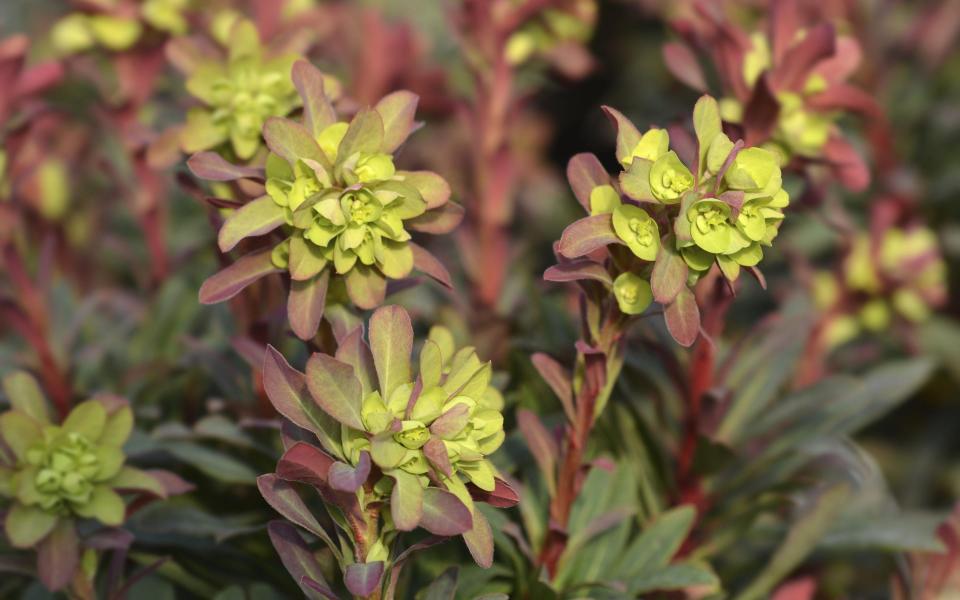
Leucanthemum x superbum 'Goldfinch'

Rose 'Princess Anne'

Sedum 'Matrona'
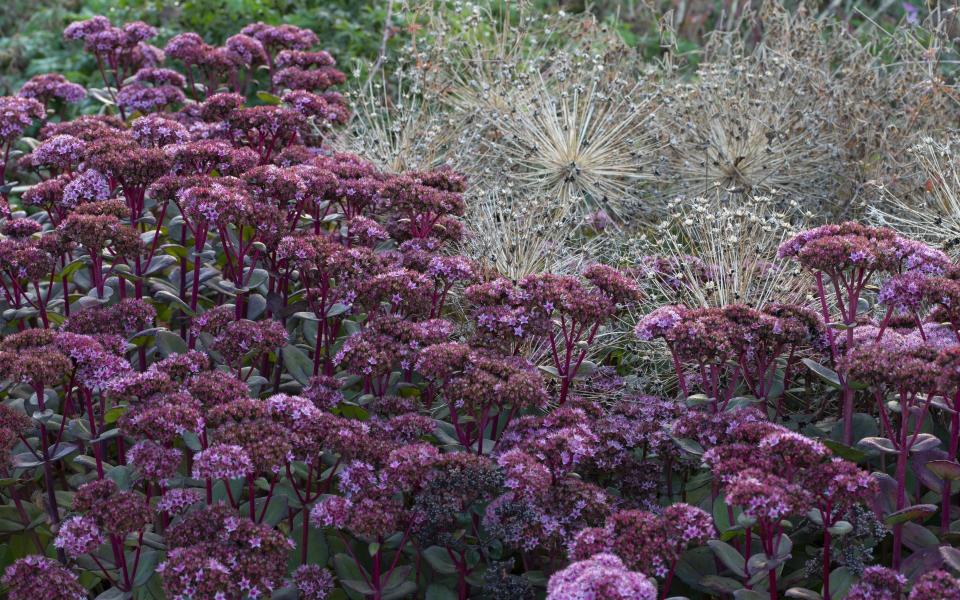
Stipa (Nassella) tenuissima
